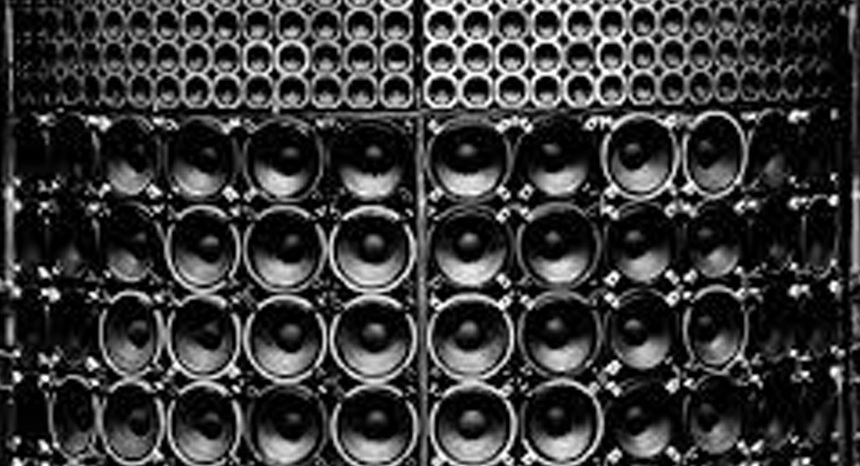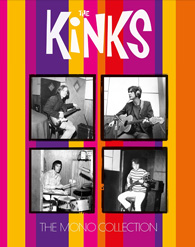Equipment Review: Atmos, SVS Prime Elevations And The Quest For Audio Nirvana

Back in 1975 one of the first commercial parodies that SNL did was for “Triple Trac”. In a world where the two-bladed safety razor was all the rage the writers imagined the preposterous idea that if one added another blade things would be better-er. You’ve got one face, why do you need three blades? To quote the punchline, “you’ll believe anything”.
 We now have razors with half a dozen blades being sold regularly and without irony, either proving our gullibility or our increase defoliation technology. I’ll leave it to you to judge.
We now have razors with half a dozen blades being sold regularly and without irony, either proving our gullibility or our increase defoliation technology. I’ll leave it to you to judge.
It’s hard not to think of the razor wars when it comes to the current state of home theatre. When is more actually less? Does the futile search for perfection actually hurt rather than help?
I don’t claim to be neutral in this fight – in a world where people are watching movies on their phones via mobile streaming I’m picking up the latest optical disc format, 4K UHD, and fighting through firmware updates, HDMI handshake issues and so on. The simplicity of streaming from Netflix with a decent internet connection far outweighs what one has to do to make shinydiscs work, and that surely bodes poorly for a future where physical ownership of films will be a concern a decade or less from now.
That said, it’s never been a more incredible time to be this kind of hobbyist – with the few key titles available on the format UHD (with high dynamic range video) can be breathtaking. Blu-Ray (BD) is hardly a slouch either, particularly on sets 65” and smaller, and the ability to play at home what for generations was only available at a theatre is not something that should be overlooked.
Save for the likes of IMAX and other large format screens the theatrical experience has never been easier to replicate or even surpass. Unless you’re lucky enough to live near one of the “community centre”-like venues such as The Alamo Drafthouse it’s sometimes a better quality projection and sound experience at home, independent of the normal distractions of cellphones and obnoxious distractions. (Sidenote: Read Tim League’s excellent article about the role of the theatre in a world of streaming.)
I will never be able to replicate a 5-storey screen like IMAX, but in my setup I can get far closer to the sound of the theatrical experience than ever before. Thanks to lossless multichannel available on BD and UHD you can pump into your setup the 5.1 or 7.1 track at whatever volume you wish (in my case: reference loud). Properly calibrated and with decent speakers it’s as transcendent an experience hearing a film like Apocalypse Now or Gravity at home as it is in a theatre, and much easier to do a repeat listen.
So, with a system already consisting of eight speakers (two front, one centre, two side surrounds, two rear and a subwoofer) we’re already in that superfluous razorblade territory. In a 7.1 you’re literally wrapped in sound, and with a mix on a film like, say, The Lord of the Rings trilogy the experience can be thrilling. Surely that’s the end of the line.
But what if it’s not?

Enter Atmos, Dolby’s latest extension to their codec. The competing DTS has a similar function, but probably to their chagrin I’ll refer to this latest extension in terms of Dolby’s platform. With Atmos, you not only have music surround you at the plane of your ear, you also have music coming from above. Walk into an Atmos-configured theatre and you’ll see banks of speakers on the ceiling, each capable of discrete playback. Send he sound of an arrow from back of room to front and the sound image will pass speaker to speaker not only on the sides but above as well, forming a near perfect 180-degree dome of sound (I guess floor up-firing speakers are the last frontier, but we’ll hold that for next time).
What’s equally impressive about Atmos is that it uses object-based mixing – rather than mixing for individual speakers, you move a dot to say the sound goes from position A to B to C, and the software intelligently fires up the respective drivers. What’s important for home use is that this system downscales – if you in a large venue setup have 10 speakers between position A and B the sound will pass through them, if at home you have a pair it will downsize to perform the same motion without losing sonic information.
Dozens of films are mixed in Atmos and released on BD and UHD with that codec (as well, as mentioned, the competing DTS:X setup that uses similar speaker locations). To hear likes of Mad Max: Fury Road in stereo is paltry, in 5.1 only half the fun. In full Atmos, you get the swirling, mad soundtrack of this action masterpiece with as much energy and impact as in the biggest of venues.
All you need to do is stick some speakers in your ceiling, ideally ones that timbre match the rest of your setup and that are capable of providing the directional signal expected by the mixing engineers.
Now, I’m still rational enough to appreciate the lunacy of this. Having spent decades building up a dream system (full B&W setup with 802D2 fronts driven by a pair of Classé 300W monoblock amps, and a 300w/ch Earthquake Cinenova driving HTM2D2 center, SCM-1 sides and 805D2 rears) why the hell would I fight with four more speakers? My setup is in a room with a 6 foot ceiling, meaning acoustically mounting speakers directly above would be even more compromised. Yet the tease of more-is-more that’s at the heart of this hobby was impossible to ignore - Particularly after I was forced to upgrade my Marantz 8801 to an 8802a in order to get UHD to work with HDCP 2.2 – gibberish to some, but for those that empathize I appreciate the shared concern. The forced upgrade got me an Atmos-capable processor, so the “fuck it” factor was fully in effect.
If you’re not going the in-ceiling route there are actually a few ways to get the Atmos experience. Companies like Klipsch (Model: RP-140SA) and Onkyo (Model: SKH-410) sell up-firing speakers that are meant to sit atop your mains, bouncing the signal upwards on the angle to then deflect back to listening position. In theory it’s an elegant solution – place them atop your rectangular front speakers and be done with it, and thanks to special tuning accounting for the bounce the effect can be quite convincing that the sound is emanating from above.
Unfortunately, with my dome-headed B&Ws that solution isn’t workable. I gave the units a try out and despite trying multiple locations everywhere from wall mount to floor the sound simply wasn’t convincing in my setup.
I’d just about given up hope when I saw that SVS was offering a new product in their Prime speaker line. SVS is a name well known to audio nerds, and one of their tube-like subs, the SVS 12-plus, is the subwoofer sitting at the back of my room giving the lowest of LFE notes with aplomb. Their Prime Elevation speakers, like the Klipsch offerings, look like cheese wedges, angled to whatever listening position you want. Unlike those from the competitors, the SVS units are full range without the “notch” in frequency to facilitate bouncing. With a unique mounting bracket that allows for horizontal or vertical placement, you can set them to downfire at just enough an angle and with just enough dispersion to give a convincing Atmos experience.
Oh, and of course when I went down this road I needed further amplification, of course, so the addition of a used lovely little 50w x 4-channel Arcam did the trick. Three amps, a pre amp, cabling, a new player – all in a (futile) attempt to chase the dragon, building of a home theatre that lives up to what you can spend a few bucks for at the multiplex.
Naturally if I had 20 foot ceilings I’d find some way of mounting full range monsters up there, but for the sake of those extra elements in the height mix these Prime Elevations have proven perfect in my setup. Using Dolby’s own “helicopter” test, which in Walter Murch-like fashion has a chopper circling just these top speakers, one gets a believable soundstage of a hovering aircraft spinning around your listening position. I’ve mounted a pair a few feet to the front of my side surrounds, as high as I can, with another pair equidistant to the rear. Looking sideways, then, you’ve got the front and centre channels in a line, a few feet further on and up the front Atmos channel, in line with listening position the side surround, a few feet back and up the rear Atmos, and then in the back of the room in line with the fronts the rear surround speakers, with the sub in its own location at the back, making for a 7.1.4 setup.
Twelve speakers.
Lunacy.
Yet when fired up I couldn’t be more pleased about how the SVS Elevations blend into my setup. Isolated they’re capable of playing back the Atmos signal without rattle or buzz, and I love the way that they’re able to be flexibly mounted (tweaking the setup is part of the fun, after all). In contrast to the competitors their sound is far more neutral, directional but not so pinpoint that their off-axis mounting causes issues. Mounted about 3 feet above listening position and 3 feet in front and behind, these four speakers form another plane of sound.
In the best Atmos mixes you can feel the soundtrack rise – swirling action at ear level has a moment where with the additional signals kick in and make you feel even more immersed. Unlike foolish seat rockers or other ridiculous gadgets the quality of this additional tech really does benefit more bombastic films, and combined with the picture on the LG 4k screen I’ve reached a caliber in my setup that I never dreamed possible.
To give the Prime Elevations a good workout I tried a few of the usual suspects, as well as engaging the “neural” modes of surround sound that artificially create signals to send to the extra channels. I’m rarely a fan of such processing, but for films that were originally released in Atmos but have come home with “merely” a 7.1 mix it’s proven to be quite beneficial.
To test I listened to the soundtracks with all channels engaged and then listening to only the Amost/DTS:X tracks to see just how active the mix is. It’s often surprising what the sound mixers choose to put in these disparate channels, and a real education for those that really wish to nerd out on the making of modern movie soundtracks.
**************************
 Mad Max: Fury Road – 3D Blu-Ray If there was one movie that I’d buy this entire setup for it’d be this one. First of all, if you haven’t seen this film in 3D you haven’t seen it (“creamy”, as Miller put it to me). Add in Atmos and you’re in heaven. Just like the film’s visuals, whose kinetic style is always locked down and coherent, the swirling surround soundtrack is just as astonishing. With the echoes of Hardy’s narrating during the opening sequence a particular highlight, you just need to flick over to the blasting flares to see just how effective these extra sounds can be. The Prime Elevations did the trick without ever rattling or distorting, simply giving that extra punch to a mix that already had as much impact as any. |
|
My favourite “Keanu Reeves beats a guy up with a car” movie, this is another energetic soundtrack that packs quite a wallop. With a slew of scenes highly active in the Atmos range the Primes were primo. |
|
I still hold that this veritable masterpiece is one of the best films of the century, and despite it not quite getting the love it deserves it does prove to be an extraordinary experience at home. A stunning UHD picture combined with a subtle but decidedly impactful Atmos mix makes for a particularly spine-tingling watch. Check out the opening scene where they crash the APV through the wall for a real blast, but revel in the quiet desert sounds and atmospheric moments that the Primes were able to capture precisely. |
|
Long-time readers will know my feelings about this Peter Berg gem, and with a riotous, reference DTS:X soundtrack this is a must have. You only need to throw in the old 5.1 mix to see what’s missing, and if you’re going to nerd out with a before/after A/B test this might be the title to do so. |
|
A good example of how a processed, “neural” version of Atmos can be setup to enhance a regular surround track. The effectiveness isn’t near what a true discrete mix – too much of the surrounds get duplicated – but it does help for those that thing they’re “wasting” by having speakers that are only intermittently used for soundtracks that require them. With a slightly more bloated mix the Primes were a bit more challenged, and the blend with the rest of the speakers was less satisfactory. Still, it’s easy enough to decide on a title-by-title basis when to kick in the processing, and the option to upconvert is a welcome one. |
|
For a true torture test I turned off my main amps, engaged DTS Neural: X and listened to the mono mix of “You Really Got Me” just to see what got extracted. A buzzy, bee-like blast came out, essentially stripping the barest of signals to send to the height speakers. It’s an excellent demonstration of how engaging post-processing should only be done at times where it benefits, and despite the awful audio result the Primes were able to keep up with the bleating nonsense. |
**************************
So, have I achieved audio nirvana? As always the sickness of this hobby is that you’re never done, and the desire to tweak is always there. The Prime Elevations are exceptional for the type of layout I’m stuck with – I don’t have the 20ft x 30ft room with high ceilings I’d love, and refuse to move to the far suburbs where such a thing would be even conceivable. In that setup I’d mirror what they do in mixing studios, mounting full, boxed speakers on a rack above listening position.
Given my six foot ceiling height and 16x20 layout the Primes seem an absolute perfect solution. In terms of reproduction of the Atmos channels they’re far more precise (and thus immersive) than the competitors. The Klipsh sounded like they were competing for attention, and the Onkyos seemed like glorified computer speakers, tinny and unmusical, almost useless for adding anything to speakers of the caliber of my mains. The fact that the SVS units were smaller, easier to adjust and sounded better makes them a complete no-brainer for adding a dash of Atmos to my current setup.
With the unique ability of the Primes to be shifted in differing orientations means I’ve got plenty to play with. Timbre wise they’re neutral enough to blend with my B&W setup, and visually they share the same gloss-less wood finish as myside surrounds. As more and more soundtracks employ this mixing technique the advantage of height channel speakers grows. What was once a cutesy post-process to mimic the sense of immersion, with discrete channels you’re truly getting what the director and their audio team envisioned when completing their film.
Let's be clear - while Dolby suggests that going Atmos is a bigger leap than moving from 5.1 to 7.1, the fact is that you'll have a better soundscape more often with "normal" surround than with the jump to height channels. In my setup I've actually got better rear speakers than my sides, as when listening to quadrophonic or 5.1 surround music having the tracks behind you is critical for the soundstage (most nerdy: I had a custom XLR switcher to re-matrix side signals to rear and vice versa, allowing a quick change for movie to music). I had a system I was entirely happy with when it was "just" eight speakers, but with the addition of these four SVS Elevations it really is a case where more is more. They're physically above the rest of my setup, a perfect visual reminder that they're icing on the cake - delicious, of course, but built upon a firm foundation below.
For those shopping for soundbars or listening in mono from your paltry smartphone this is all probably the ravings of a sociopath, and even for those that have built a system they’re happy with then heading for Atmos is about eight steps too far. Still, if you have the setup, and the desire, there seems no better, simpler, more cost effective way to get Atmos at home. I’ll never get my home IMAX screen, as much as I can hope. But I’ve got the surround setup of my dreams, thanks in part to SVS’s newest elevation speakers, and I couldn’t hope for anything more than that.
SVS provided two pair of Elevation Primes for review purposes which I will be purchasing and making part of my permanent home theatre. Thanks to Nicholas Brown at SVS for his assistance and patience with getting this article together.
For specifications on the SVS Prime Elevations click here.



 John Wick - UHD
John Wick - UHD Sicario – UHD
Sicario – UHD Battleship - UHD
Battleship - UHD  Star Wars: The Force Awakens – 3D Blu-Ray
Star Wars: The Force Awakens – 3D Blu-Ray The Kinks – The Kinks – (Mono LP)
The Kinks – The Kinks – (Mono LP)


